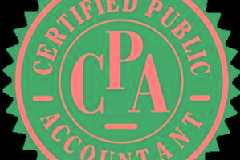Certified Public Accountant(CPA)
CPA is a globally recognized financial course offered by AICPA (The American Institute of Public Accountants ) USA.
A CPA is a trusted financial advisor who helps individuals, businesses, and other organizations plan and reach their financial goals
All CPAs are accountants, but not all accountants are CPAs.
How to become CPA?
3 Eâ??s are required for licensure:
- Education
- Exam or Uniform CPA Examination
- Experience
I. Conceptual Framework, Standards, Standard Setting, and Presentation of Financial Statements (17% - 23%)
1. Process by which Accounting Standards are Set and Roles of Accounting Standard-Setting Bodies
- U. S. Securities and Exchange Commission (SEC)
- Financial Accounting Standards Board (FASB)
- International Accounting Standards Board (IASB)
- Governmental Accounting Standards Board (GASB)
2. Conceptual Framework
- Financial reporting by business entities
- Financial reporting by not-for-profit (nongovernmental) entities
- Financial reporting by state and local governmental entities
3. Financial Reporting, Presentation and Disclosures in General-Purpose Financial Statements
- Balance sheet
- Income statement
- Statement of comprehensive income
- Statement of changes in equity
- Statement of cash flows
- Notes to financial statements
- Consolidated and combined financial statements
- First-time adoption of IFRS
4. SEC Reporting Requirements (e.g. Form 10-Q, 10-K)
5. Other Financial Statement Presentations, including Other Comprehensive Bases of Accounting (OCBOA)
- Cash basis & Modified cash basis
- Income tax basis
- Personal financial statements
- Financial statements of employee benefit plans/trusts
II. Financial Statement Accounts: Recognition, Measurement, Valuation, Calculation, Presentation, and Disclosures (27% - 33%)
1. Cash and Cash Equivalents
2. Receivables










